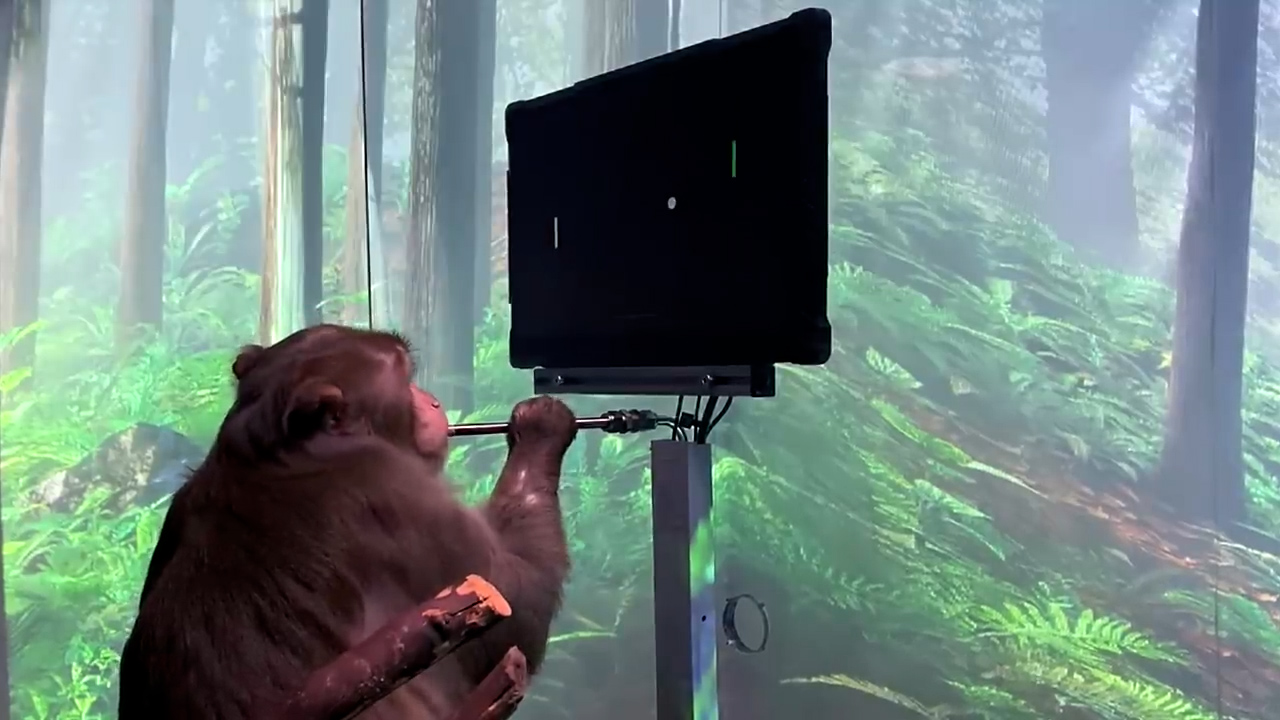Watch Pager the macaque dominate an arcade classic using Musk’s brain-machine interface.
In a video released yesterday by Neuralink, a neurotechnology company founded by Elon Musk specializing in brain-machine interfaces, we caught small glimpse of the companies revolutionary BMI technology in action as a macau names Pager controlled the paddle in a game of Pong using only its brain.
In the roughly three-and-a-half-minute video, we see Pager operating a computer cursor wirelessly using its neural activity before moving onto a game of Pong. The wireless BMI system accurately responds to Pager’s neural activity in real-time thanks to a series of electrodes connected to an implant via neural threads, showing off the primates’ impressive gaming skills in the process.
“Today we are pleased to reveal the Link’s capability to enable a macaque monkey, named Pager, to move a cursor on a computer screen with neural activity using a 1,024 electrode fully-implanted neural recording and data transmission device, termed the N1 Link,” said the company in an official blog post. “We have implanted the Link in the hand and arm areas of the motor cortex, a part of the brain that is involved in planning and executing movements. We placed Links bilaterally: one in the left motor cortex (which controls movements of the right side of the body) and another in the right motor cortex (which controls the left side of the body).”
“By modeling the relationship between different patterns of neural activity and intended movement directions, we can build a model (i.e., “calibrate a decoder”) that can predict the direction and speed of an upcoming or intended movement. We can go further than simply predicting the most likely intended movement given the current pattern of brain activity: we can use these predictions to control, in real-time, the movements of a computer cursor, or in the video [below], a MindPong paddle.”
We caught our first glimpse of Neuralink’s N1 Link last year after the company showed a wireless version of the system being used to track the limb movements of a pig with 1,024 channels of action potentials. This latest demonstration marks a major milestone for the company, which has now begun using animal models with homologies closer to that of humans.
“The rhesus macaque model allows us to design, validate, and advance the performance and robustness of a complete “closed-loop” motor BMI system intended to improve the quality of life of people with neurological disorders.”
Moving forward, Neuralink hopes to provide those with paralysis direct control of their computer cursors using their neural activity via the companies ‘Link’ system; one of the end goals being full neural control of a user’s computer system, from reading and writing messages to browsing the web.
“Our first goal is to give people with paralysis their digital freedom back: to communicate more easily via text, to follow their curiosity on the web, to express their creativity through photography and art, and, yes, to play video games. After that, we intend to use the Link to help improve the lives of those with neurological disorders and disabilities in other ways. For example, for people with paralysis the Link could also potentially be used to restore physical mobility.”
For more information on Neuralink’s ‘Monkey MindPong,’ check out the full blog post.
Feature Image Credit: Neuralink
The post Monkey Plays ‘Pong’ With Its Brain Using Elon Musk’s Neuralink appeared first on VRScout.





